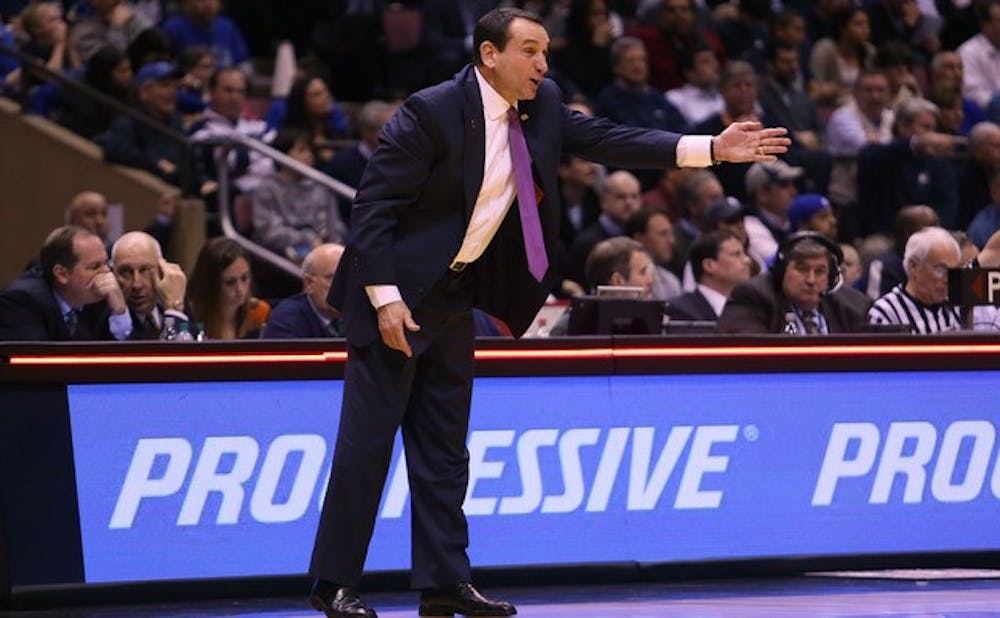With scoring at a six-decade low in men's college basketball and an all-time low in the women's game, the NCAA decided something had to be done to attract fans to collegiate basketball games outside the month of March.
The answer—a package of rule changes aimed at improving the pace of play and making the college game more similar to the one seen in the professional ranks.
Both the NCAA Men's Basketball Rules Committee and the NCAA Women's Basketball Rules Committee made recommendations for changes to the game during their meetings from May 12-15. The proposed changes were approved by the NCAA Playing Rules Oversight Panel during a conference call June 8.
In the men's game, the biggest change was the long-awaited reduction of the shot clock from 35 to 30 seconds. Combined with a renewed emphasis on defensive rules such as hand-checking and contact in the post, a switch to four timeouts per team and an initiative to expand the restricted area arc from three feet to four feet, the rules are expected to speed up the pace of the game and produce more scoring.
"I liked everything," Duke head coach Mike Krzyzewski said during his K Academy camp in late May when asked about the changes that had been proposed two weeks earlier. "I think they should look at the international rules and copy a lot of things that they do. I like the fact that coaches can’t call timeout, I think it puts more [on the players]. Overall, I thought just a huge push in the right direction."
The changes may also ease players' transition to the NBA. The new rules allowing greater player movement away from the ball—a skill NBA teams covet—will force players to make moves earlier in the shot clock, giving scouts a better chance to evaluate how a player's skill set could transfer to the next level.
"I think that anything that can help improve our game, the flow of the game, is really good," Duke associate head coach Jeff Capel said. "We experimented with [the shorter shot clock] in the exhibition games last year—wasn’t an issue. Honestly, I think we’re the only country that doesn’t have universal rules for basketball. It’s amazing—the game was created in this country but we’re the only country that has different things."

On the women's side, the biggest change is a switch to a four-quarter format. The change from two 20-minute halves to four 10-minute quarters was made in an effort to improve the pace of the game and make it more similar to international and WNBA rules.
"It might have taken a lot of people by surprise on the outside, but on the inside there’s been a lot of discussion [about] trying to match up with FIBA rules, trying to speed the game up, just trying to make differences to make it faster overall," Duke head coach Joanne P. McCallie said.
The switch to quarters will have carry-over effects on the way timeouts and team fouls are distributed. Team will be allowed only four timeouts—three 30-second timeouts and one 60-second timeout—with only two carrying over to the second half. The one-and-one free-throw bonus—previously a staple of the college game—will be eliminated entirely with teams getting two free-throws after the fifth team foul in each quarter.
Like Krzyzewski, McCallie has coached with international rules as part of USA Basketball and advocated for further changes to the college game.
"I was still going for the 24-second clock," McCallie said. "After coaching USA Basketball and coaching overseas, I really like the 24-second clock in terms of the timing it puts to the offense in a game. That didn’t really move. The quarters moved and what not, but I think these are steps to make our game better and also steps to try to make it slightly more uniform across the world."
Amrith Ramkumar and Nick Martin contributed reporting.
Get The Chronicle straight to your inbox
Signup for our weekly newsletter. Cancel at any time.

